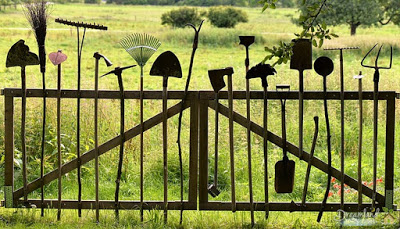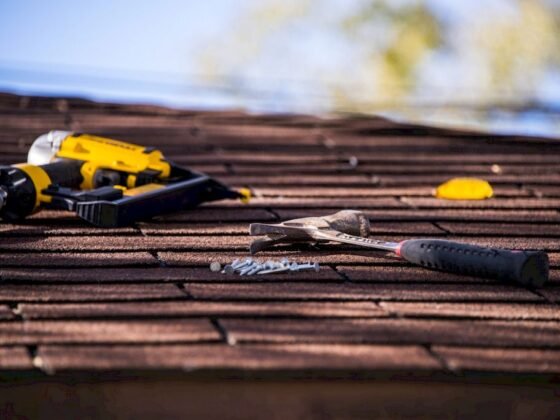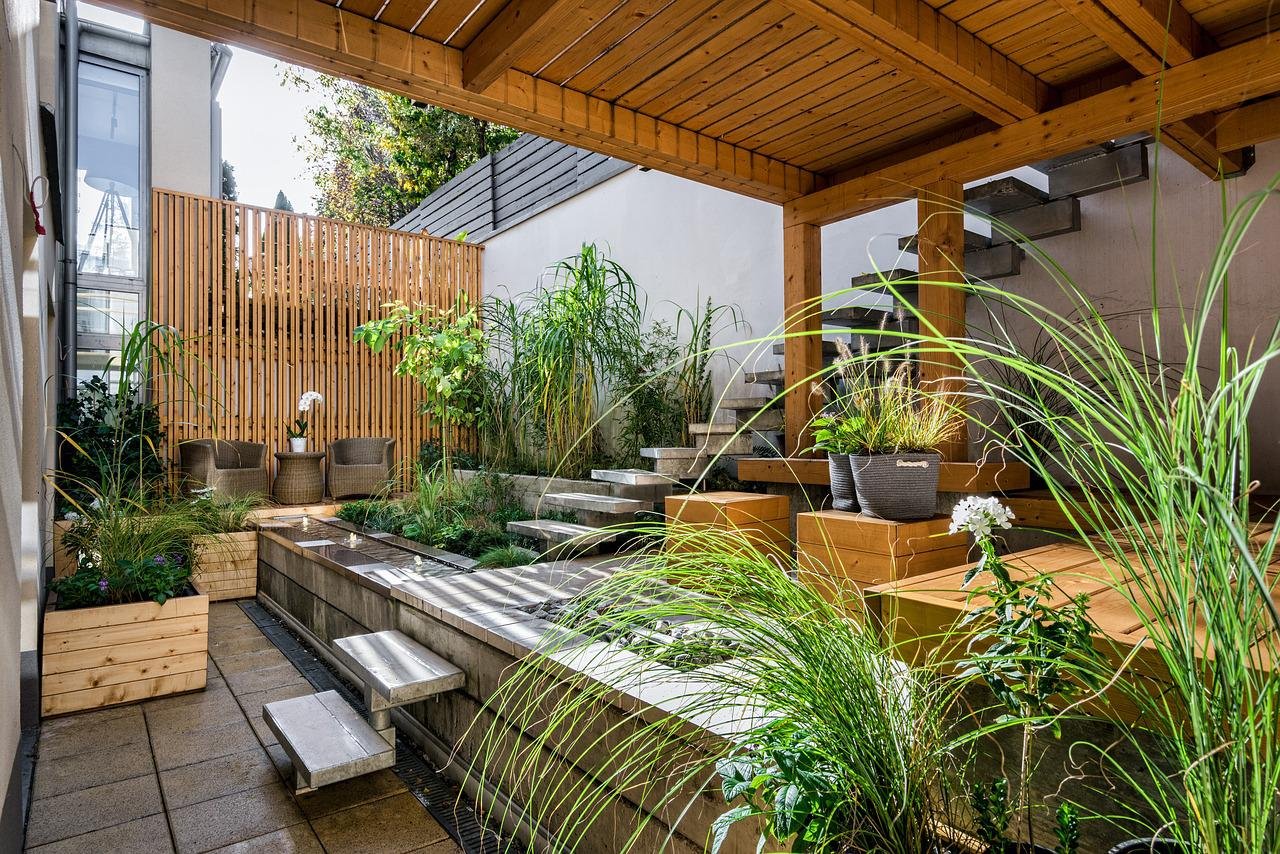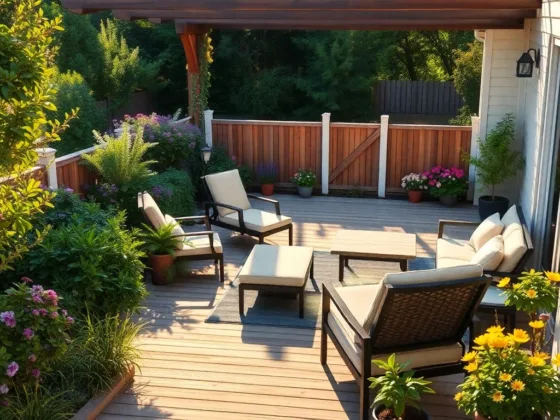Table of Contents Show
September in most parts of the U.S. brings welcome weather changes that signal the arrival of fall gardening – that means summer cleanup along with planning for next spring. This is probably the second-busiest gardening month of the year.
 |
| The second-busiest gardening month of the year |
Some Important Chores
Pull up dying summer annuals, such as petunias and marigolds that have bloomed out. Feed fall bloomers, such as hardy mums. Plant new fall annuals, including pansies and asters. Sow spring seeds and plant spring bulbs. Start clearing dead leaves, stalks, and flower shoots out of summer perennials, such as hosta, echinacea (purple coneflower), and balloon flower. In purged flowerbeds, add amendments, including compost, gypsum, iron, etc., for good soil next spring. Soil test kits can tell you what your soil lacks.
This is also a good time to look over the tools and the patio and lawn furniture. Be ready to put them away in good condition by the end of September. You should clean, repair, sharpen and store garden tools and equipment for the winter. Before disconnecting the hose, take an afternoon and wash off the hand tools, shovels, spades, pitchforks, etc.
You should also take time to inventory chemical applications, such as pesticides, weed killers, fertilizers, and other items, before storing them for the winter. You’ll be using the lawn mower for another month or so, but consider giving it a “spring” tune-up in September, thus avoiding the spring rush. Take it to a lawn and garden center, or learn to do it yourself.
While the weather is mild, spend a couple of days in the garage or shed. Clean out old containers, throw away the trash, sweep out the leaves, dead bugs, and debris, and do some general organizing. Think about putting up shelves or a pegboard to hold tools. In general, some time spent organizing in September will mean a lot less frustration, sweat, and toil in the spring.
Indoor Greenhouse
Transplant the pansies, ornamental kale, asters, and chrysanthemums outdoors that you started two months ago from seed. Now that the indoor greenhouse has empty space, use it for the outdoor container plants you want to bring in for the winter.
These can include petunias, geraniums, coleus, and even impatiens. Try bringing in whatever you’d like to keep growing during the fall and winter. Most of these plants need light, especially, provided by indoor greenhouse conditions.
 |
| Indoor Greenhouse |
Forcing Bulbs
This month is the time to begin planting spring-flowering bulbs in containers for indoor blooms this winter. To bloom, bulbs have specific light and temperature needs and must have a period of dormancy. So, if you want tulips for Christmas, plan accordingly.
Use only the best bulbs you can find for forcing indoors. Usually, you must buy new, hardy bulbs for successful forcing indoors. Try paperwhites, tulips, hyacinths,s and daffodils. They should be available now at garden centers and nurseries.
While you are cleaning up patio pots that held annuals all summer, think about which containers you will use for indoor bulbs. For instance, paperwhites (narcissus) should be placed in shallow bowls of gravel or pebbles. Pots of soil should be used for tulips, hyacinths, and daffodils.
See the Forcing Bulbs section on the Home Page for more details on how to handle different kinds of bulbs indoors.
Houseplants
Bring in houseplants that have spent the summer outdoors. Cut back leggy or damaged foliage, and trim by about one-third. The plant won’t be able to support this growth during low-light winter months indoors. Keep the plants in good light inside. Don’t water or feed for about two weeks while they adjust. After that, cut feeding to once every other month, using a half-strength solution.
Try bringing some petunias inside for the winter. (See Indoor Greenhouse section above.) Either bring in a patio container with petunias or lift a petunia from the garden and reset it in a pot. Remember to cut them back and give them plenty of light, either in a sunny window or in the indoor greenhouse. Also, you can keep root cuttings of petunias during the winter by preserving them in sand or potting them for winter and then replanting stem cuttings from those plants in the spring.
Try bringing indoors other annuals in containers, bearing in mind their light needs. Usually, low-light annuals, such as impatiens and coleus, do better indoors than full-sun plants, such as marigolds and geraniums, etc. However, full-sun plants can be kept in good condition over the winter if placed in a very sunny window or in an indoor greenhouse. Plants that over-winter fairly well are asparagus fern, vinca, coleus, lantana, and geranium. Before bringing them in, inspect for bugs and diseases. Keep checking them indoors for signs of problems and treat them as needed.
If you have been nurturing last year’s poinsettia all spring and summer (see May, June, July, and August for details), now is the time to bring the poinsettia indoors. Do this before the onset of cool nights. The indoor temperature should stay around 70 degrees. Feed the poinsettia and give it regular watering until its color begins to show in late November and early December. Then follow the instructions for indoor care and dormancy (see December and January.)
Outdoors
September Tips for Lawn Care
Most experts agree that September is the best month to overseed — that is, spread new grass seed on an established lawn. Most weeds are finished growing and won’t compete with the grass seedlings, plus cooler weather and fall rains promote root growth before hard winter sets in. For best results, prepare the lawn bed by dethatching, verticutting, or plugging. Keep the new seed well-watered for the next two to three weeks. Also, DO NOT apply any weed controls or a regular fertilizer during this time. Use a lawn-starting fertilizer formula.
Now is a good time to aerate or plug an established lawn. Often this goes hand-in-hand with overseeding, but it can be done alone, simply to help give a thick, mature lawn some breathing room. Aeration is a mechanical process that pulls out cores of sod and soil from an established lawn. This, along with dethatching, should be done before overseeding. However, aeration, or plugging, also helps an established lawn.
September is a good month to dethatch an established lawn. This can be done by hand with a rake but it’s a lot of work. A rented machine is easier to use. Either way, you remove the layer of dead grass near the soil. This gives the grass plants more light and air. Dethatching is advisable before overseeding but also helps to regenerate an established lawn.
Verticutting can also be done before overseeding. This is another machining process that creates furrows for seed in established lawns. It can also be done to help start a new lawn. September is the month to apply winter fertilizer to cool the season with bluegrass, rye, and fescue.
DO NOT fertilize zoysia now, which is going dormant. Zoysia should be fertilized in the late spring when it comes to life again. Apply weed controls this month, if you haven’t overseeded or plugged with seed. Chickweed shows up during the fall rains.
Annuals
- It’s clean-up time for all the dying annuals, both in flowerbeds and containers. Pull up spent plants. Apply compost or fertilizer and soil amendments to flowerbeds.
- Replace summer annuals with cool-season plants, such as ornamental kale and pansies. Plant kale in close bunches for great color.
- If you have a poinsettia that you’ve been growing outdoors, bring it inside this month and place it in a sunny window. Next month, you will begin putting it in a closet each night, preparing it to bloom again by Christmas!
- Try bringing some annuals in containers indoors for the winter. (See Indoors above).
September Tips for Bulbs
As you clean up annual and perennial flowerbeds, prepare the soil for planting bulbs. Loosen the soil and add fertilizer and amendments, such as compost, lime, and gypsum. Bulbs also benefit from bone meal added to the soil when they are planted.
If you mail-ordered bulbs for fall planting, they should start arriving in September, October, and November, depending on the cool temperatures for planting in your region. Otherwise, garden centers and local nurseries should have lots of bulbs now. You may begin planting certain bulbs as soon as the temperature falls into the 60s consistently. If it’s too warm, they will begin to sprout out of season and that will stunt their spring blooms.
Don’t plant tulips this month in all but the most northern zones. The ground is still too warm elsewhere. Tulips are better planted in October or November since they require an extended period of cold in order to grow and flower properly the next season.
Small flowering bulbs, such as snowdrops, winter aconite, crocus, glory-of-the-snow, grape hyacinth, and squill, may be planted as soon as temperatures remain cool consistently. Plant these little bulbs thickly in a protected but sunny spot, such as the south side of the house. Plant crown imperial (fritillaria imperialis) and madonna lily (lilium candidum) in September. Narcissus and jonquils may be planted now.
NOTE: Paperwhites (polyanthus narcissus) are not hardy outdoors in northern zones, but they bloom well indoors. (See Indoors above or the Forcing Bulbs section on the Home Page.)
Gladiolus also is usually not hardy in the cooler zones and should be dug and stored in September, and re-planted next spring. However, some gladiolus has been known to survive over the winter in this region if they are in a sheltered area, near the house, and the soil is covered with a generous layer of mulch. In southern zones, they over-winter quite well with no special care.
September Tips for Perennials
Hardy asters are blooming now and need feeding and watering. If you don’t have any, plant some from the nursery this month! They make great fall bouquets and are best if planted in groups. Some of the taller types may need staking. Watch for signs of insect damage, especially from the lace bug, which eats the underside of aster leaves. Apply spray or dust, and repeat as needed.
Don’t feed chrysanthemums anymore after the first of the month and don’t nip the buds, either. They should be allowed to fully bloom in September. Treat the same as asters, above. The garden centers and nurseries are full of chrysanthemums in September. Plant them in groups where they’ll get plenty of suns. Water and feed well.
Keep dahlias well watered. They should be blooming in September. Watch for pests, such as aphids, and treat them accordingly.
Remove the tops of peonies, cutting leaves and old flower stalks down to about two inches above the ground. If peonies suffered from diseases, such as leaf spots, blight, or root knots, that kept them from blooming and growing properly, cut off all the tops near the crowns and discard or destroy them. If there was a severe infestation, remove the top layer of soil around the plants and replace it with fresh soil.
Hybrid or tea roses are usually revived by the cooler temperatures and fall rain, and will bloom from September until the first heavy frost. Keep watching for diseases, such as black spots, and insect pests.
Cut back stalks of dying perennials and clean debris out of perennial flowerbeds. Apply compost and soil amendments, then add fresh mulch. Keep weeding.
Plant spring-blooming perennials and biennials, as seeds or nursery stock. These include hollyhock, sweet pea, echinacea, madonna lily, myosotis, and Oriental poppy. Get nursery stock from local garden centers or through mail-order catalogs or online nurseries, along with your order of spring bulbs.
Many flowering perennials will bloom until frost.
Here are some to look for:
| 1 | 2 | 3 |
|---|---|---|
| Anthemis (Golden Marguerite) | Coralbells (Heuchera) | Coreopsis (Tickseed) |
Flax | Daylily | Delphinium |
| Felicia (Blue Daisy) | Feverfew (Chrysanthemum) | Cupid”s Dart (Catanache) |
Fleabane (Erigeron) | Gaillardia (Blanket Flower) | Geranium (Cranesbill) |
Globe Thistle (Echinops) | Helianthus (Perennial Sunflower) | Heliopsis (Oxeye) |
Stokesia (Stokes” Aster) | Liatris (Gay Feather) | Lobelia (Cardinal Flower) |
Loosestrife (Lythrum) | Monkshood (Aconitum) | Rudbeckia (Coneflower/Echinacea) |
Poker Plant (Torch Lily) | Potentilla (Cinquefoil) | Lavender |
Salvia (Blue/Sage) | Sedum (Stonecrop) | Phlox |
Veronica (Speedwell) | Yarrow (Achillea) |
Dividing, Seeding, and Transplanting
In seeding or transplanting, don’t forget to prepare the soil and water in new transplants, bulbs, and seeds. Mulch the area afterward to protect it from winter “heaving”.
Many other perennial plants may be divided and transplanted or seeded outdoors this time of year.Here are some to consider:
- Adonis (seed)
- Anchusa (Catchfly/Maltese Cross) (reseed)
- Artemesia (Silver Mound) (seed, root divisions, or take stem cuttings to overwinter)
- Candy Tuft (Iberis) (seed)
- Chinese Lantern (Physalis) (root division)
- Coral Bells (Heuchera) (root division)
- Coreopsis (Tickseed) (seed)
- Day Lily (root division)
- Dianthus (Pinks/Sweet William) (root division, seed, or take stem cuttings to overwinter)
- Dicentra (Bleeding Heart) (root division)
- Echinacea (Purple Coneflower) (seed, root division)
- Fleabane (Erigeron) (root division)
- Hollyhock (Seed, root division)
- Hosta (Funkia/Plantain Lily) (seed, transplant crown divisions)
- Phlox (root division, nursery stock)
- Rudbeckia (Coneflower/Echinacea) (root division)
- Oriental Poppy (seed outdoors or root division, or plant nursery stock)
- Scabiosa (Pincushion Flower) (seed outdoors or root division)
- Shasta Daisy (root division)
- Spurge (root division)
- Stokesia (Stokes Aster) (root division)
Pests and Diseases
Crickets begin appearing this month and try to come indoors. Place mothballs or moth crystals around the foundation outdoors and along the floorboards in the garage and basement to discourage them from coming inside.
Spray bug repellant or sprinkle Diazinon granules around foundations to discourage pillbugs, spiders, and other insects from coming in for winter
Examine fruit and ornamental trees for signs of borer damage. This should be treated in September since borers continue their attack during the winter months. Look near the ground for masses of gummy material. Apply controls as needed. Treatment in late September or early October will take care of borers before they do much damage.
Examine junipers for signs of juniper midge damage—brown discoloration of new tip growth. Treat as needed.
Watch out for poison ivy, which turns orange and red in the early fall. A small, semi-trailing plant with three-lobed leaves. It’s abundant in woods and thickets and along stream banks. It is also very common along roadsides and is found clinging to fence posts and trees. In the fall, poison ivy has clusters of yellowish-white berries.
Pruning
Trim background ivy, vinca, grape ivy, Boston ivy, euonymus, and other ground covers that have rambled outside their bounds, especially those that have climbed around trees and bushes or have attached suckers to the house. Any deciduous trees can be pruned now.
Tools and Equipment
It’s a good time to clean off, organize and put away all the garden tools you will no longer be using. Scrape off the dirt and rust from metal implements, and oil them. Repaint wood handles. Throw away broken tools. Get a big box and put them all together, or put up a pegboard and hang them neatly.
Bring in sprinklers, sprayers, watering cans, and other items that are no longer needed. Clean, oil, and store them.
 |
| Tools and Equipment |
Trees and Shrubs
For shrubs, September is the last soil cultivation for the year. Let the soil remain rather rough — not in clumps — but no need to smooth it down, since it will catch and retain more fall and winter moisture that way.
Evergreens may be planted in September, as soon as the summer heat has passed for certain, usually after a good fall rain. Shrubs transplanted in September will have better root growth than those transplanted in November during a dormant state.
Do not prune flowering shrubs this late in the season, since you will be removing the flowering buds for next spring; also, pruning will stimulate new growth, which will be killed in winter. Prune after flowering next spring. Spread fresh mulch around trees and shrubs.
Watering
Fall rain is usually adequate, but if there is a dry spell of 10 to 14 days without rain, do some watering before you put away the hose for the winter. Remember to water newly transplanted trees, shrubs, and perennial flowers.
Remember to water the cool-season annuals you have planted: ornamental kale, asters, and chrysanthemums.
Birds
While putting things away and cleaning up, look for the bird feeder. You’ll be setting it out in another month or so.
Miscellaneous
- Start cleaning off, repairing, and repainting lawn and patio furniture, especially wood pieces, such as swings.
- Repaint and seal cracks in garden statuary. Delicate statuary and fountains should be brought indoors, if possible, or they should be well protected with covers of heavy plastic or tarps for the winter.
- Take photos of your fall plantings, the remaining annuals and perennials, and the trees that are starting to turn color.
- Update your garden journal with final notes on the summer season, and what you plan for the fall, and next spring. September is also a good time to check your garden budget and see how you came out so far this year.
- Clean out the barbecue grill and store or cover it for the winter.










